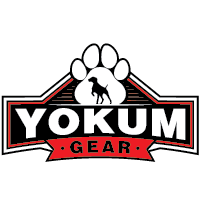Pet owners strive to provide the best care for their furry friends, and this includes selecting the best accessories and tools for their pet’s needs. One such essential accessory is the three-bowl dog feeder. This type of feeder has gained popularity for its functionality and versatility, making it a useful addition to any pet-owning household. If you are considering getting a three-bowl dog feeder, this guide will help you make an informed decision.
Understanding the Benefits
A three-bowl dog feeder often features three separate bowls secured in a single frame. This design offers numerous benefits, including:
- Separation of Food and Water: One of the key advantages is the ability to keep water and food separate. This prevents water from getting into the food bowl, keeping kibble fresh and dry.
- Multiple Pets: If you have more than one pet, a three-bowl feeder can be extremely convenient. Each pet can have its own bowl, helping to reduce territorial disputes.
- Special Dietary Needs: For pets with special dietary needs, this feeder helps you manage different types of food or medication easily.
Material Considerations
The material of the feeder is crucial for both durability and pet safety. Common materials include:
- Stainless Steel: Known for durability and ease of cleaning, stainless steel is a popular choice for pet feeders. It is also resistant to corrosion and does not harbor bacteria.
- Ceramic: Ceramic bowls are aesthetically pleasing and can add a touch of style to your home. They are generally heavier and less likely to be tipped over by enthusiastic pets.
- Plastic: While plastic feeders are often more affordable and lightweight, they can retain odors and may not be as durable as other materials. Ensure any plastic feeder is BPA-free to avoid health risks.
Size and Capacity
The size of the three-bowl feeder should be appropriate for your pet’s size and dietary needs. Consider the following points:
- Dog Size: Large dogs will require bigger bowls to accommodate their food and water needs, whereas smaller breeds can manage with smaller bowls.
- Meal Frequency: If your pet eats several small meals throughout the day, smaller bowls may suffice, but for pets that eat larger meals, bigger bowls are necessary.
Additional Features
Some three-bowl feeders come with additional features that can enhance their usability:
- Adjustable Height: An adjustable-height feeder can be customized to your pet’s comfort level, promoting better posture during eating and reducing strain on their neck and joints.
- Non-Slip Base: A non-slip base ensures that the feeder remains in place, even with the most enthusiastic eaters.
- Ease of Cleaning: Look for feeders with removable bowls that are dishwasher safe for easy and thorough cleaning.
Personalized Preferences
Ultimately, the best feeder for your pet depends on their unique needs and preferences:
- Behavioral Habits: If your pet tends to tip over bowls, opt for heavier materials like ceramic or stainless steel.
- Health Considerations: For pets with arthritis or other health issues, raised or adjustable feeders can make a significant difference in their comfort.
Conclusion
Choosing the best three-bowl dog feeder for your pet involves considering their size, dietary needs, and any special requirements they may have. By evaluating the materials, size, additional features, and your pet's unique characteristics, you can find a feeder that meets both their needs and your expectations. A well-chosen feeder not only makes mealtime more enjoyable for your pet but also helps maintain a cleaner and more organized feeding area in your home.

